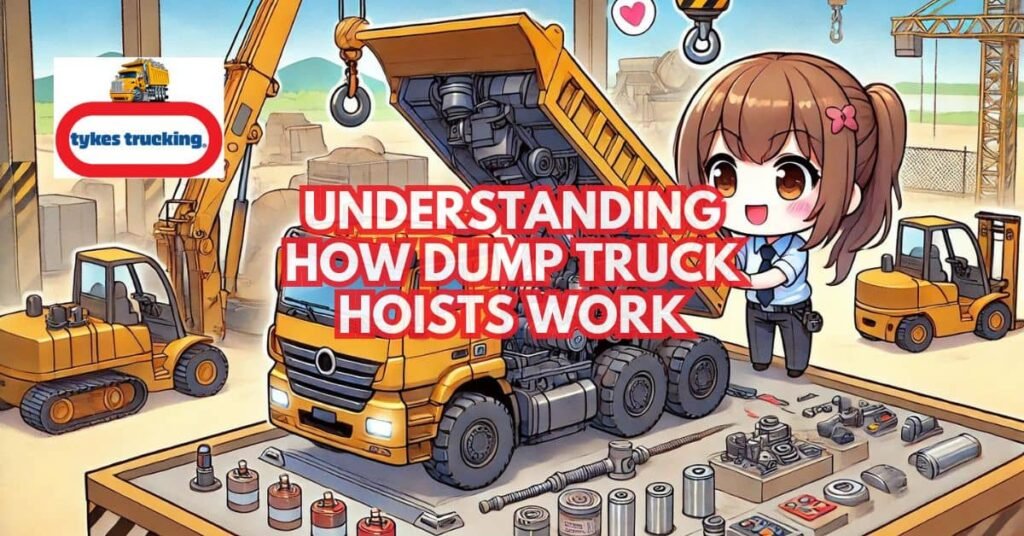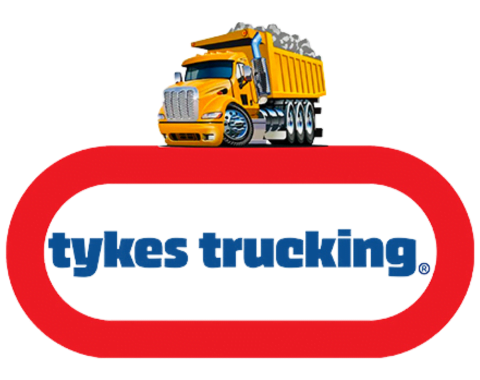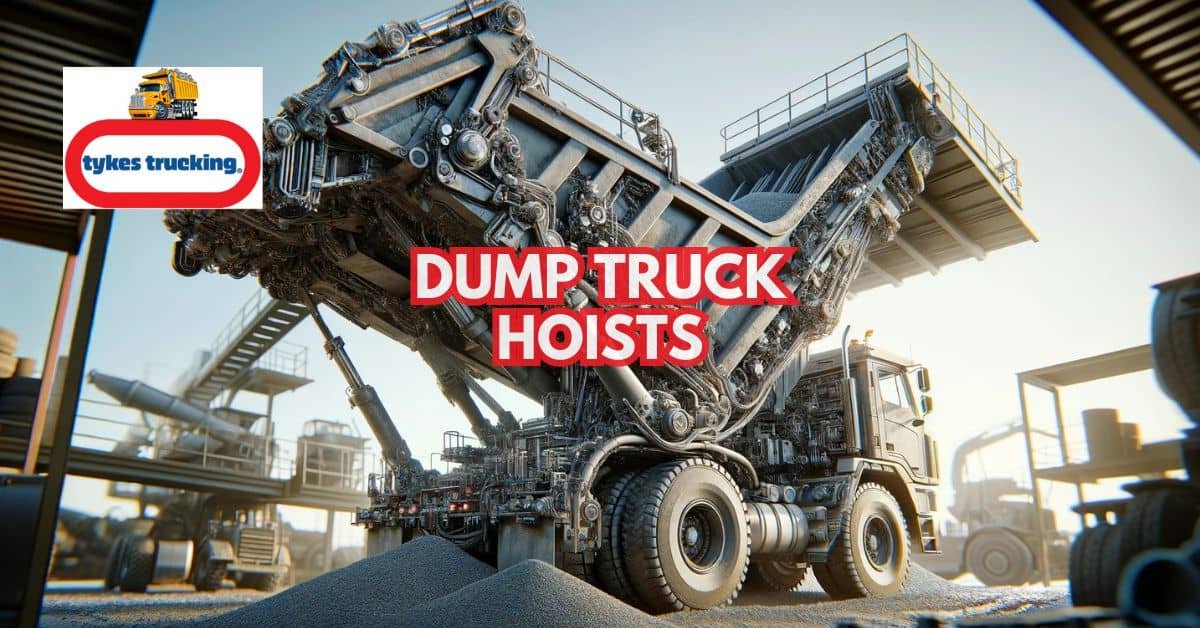Dump truck hoists are essential for lifting and unloading heavy materials efficiently.
These hoists raise the truck bed, allowing materials to slide out smoothly during operations.
Without dump truck hoists, trucks would struggle to perform their main tasks in construction, mining, and other industries.
Understanding how dump truck hoists work helps operators use them safely and keep them in good condition.
Let’s explore the key components and functions of dump truck hoists, highlighting their importance in heavy-duty work.
1. More Than One Way to Lift: Exploring Different Dump Truck Hoist Types
Dump truck hoists come in various types, each suited for different applications, body configurations, and load requirements.
Telescopic hoists use a series of hydraulic cylinders that extend in stages, providing a ton of lifting height for heavy loads and tall dump angles.
Scissor hoists rely on a crisscrossing support structure, offering stable and controlled lifting, which is especially useful for situations requiring lower height clearance.
Dual lift hoists combine the advantages of telescopic height and scissor stability, making them a versatile option for handling a wide range of tasks.
These systems rely on durable equipment designed to handle the stress and weight of repeated use under challenging conditions.
Operators must understand the capabilities and limitations of each hoist type to choose the best fit for their truck body and the job at hand.
By selecting the right hoist, users can maximize efficiency, reduce strain on equipment, and ensure safety during operations.
🚚 Guidelines for Selecting Reliable Dump Truck Haulers in Marikina
2. Hydraulic Power 101: The Force that Drives the Hoist
Hydraulic systems are the backbone of dump truck hoists, providing the necessary power to lift heavy loads.
These systems operate by using pressurized fluid to create a powerful lifting force.
The hydraulic pump generates this pressure, which is then transferred to the hoist cylinders.
This setup allows for smooth and controlled lifting, which is crucial for safe dump truck operation.
The efficiency and reliability of hydraulic power make it ideal for demanding tasks in various industries.
🚚 Essential Components of Garbage Trucks for Optimal Performance: A Comprehensive Overview
3. New Technology and Features in Dump Truck Hoists
Modern dump truck hoists are advancing with new technology to improve safety, efficiency, and reliability.
Smart sensors integrated into the hoist systems monitor the product’s weight during lifts and analyze the equipment’s performance in real time.
Remote controls now let operators manage the hoist from a safe distance, minimizing risks and improving ease of use.
Many hoists are also equipped with telematics systems that allow fleet managers to track trailer and truck activity, optimize usage, and gather important operational data.
These systems help predict when parts of the hoist may need maintenance, reducing downtime and preventing unexpected failures.
Some manufacturers are designing hoists with eco-friendly hydraulic systems, which reduce energy use and minimize environmental impact.
These advancements ensure that dump truck hoists not only perform better but also help companies extend the life of their equipment and improve overall productivity.
🚚 The Advantages of Renting Small Dump Trucks for Small-Scale Construction Projects
4. Lifting the Load: A Look at the Hoist’s Mechanisms
The mechanism of a dump truck hoist involves a series of hydraulic cylinders and pistons.
When activated, hydraulic fluid is pumped into the cylinders, causing the pistons to extend and lift the truck bed.
The design ensures a smooth and controlled lift, preventing sudden movements that could be dangerous.
Some hoists also incorporate stabilizing features to enhance safety during operation.
Understanding these mechanisms helps operators maintain the hoist and troubleshoot issues effectively.
🚚 An In-Depth Exploration of Various Types of Garbage Trucks: The Backbone of Waste Management

5. Power Take-Off (PTO): Transferring Engine Power to the Hoist
The Power Take-Off (PTO) system is crucial for dump truck hoists, as it transfers engine power to the hydraulic pump.
The PTO is typically connected to the truck’s transmission and engages when the hoist is activated.
This system allows the truck engine to power the hydraulic pump, providing the necessary force to lift the truck bed.
Proper operation and maintenance of the PTO are essential to ensuring the hoist functions correctly.
Operators can maximize the performance of the hoist and effectively troubleshoot problems by having a thorough understanding of the PTO.
🚚 The Power and Efficiency of Tandem Axle Dump Trucks in the Construction Industry
6. Choosing the Right Muscle: Understanding Hoist Capacity
Hoist capacity refers to the maximum weight a hoist can lift safely, which is critical for efficient operation.
Each dump truck hoist has a specific capacity rating, determined by its design and hydraulic system.
Overloading the hoist can lead to mechanical failures and pose significant safety risks.
Operators must always consider the weight of the load and ensure it is within the hoist’s capacity limits.
Choosing the right hoist capacity for the intended application ensures both safety and performance.
🚚 A Comprehensive Guide to Side Dump Trucks and Their Applications
7. Safety First: Essential Features of a Reliable Dump Truck Hoist
Safety features in dump truck hoists include overload protection, emergency shut-off systems, and stable lifting mechanisms.
Overload protection prevents the hoist from lifting loads beyond its capacity, avoiding potential damage.
Emergency shut-off systems allow operators to quickly stop the hoist in case of a malfunction or emergency.
Stable lifting mechanisms ensure the load is lifted smoothly and securely, reducing the risk of accidents.
Regularly inspecting and maintaining these safety features is crucial for safe dump truck operation.
🚚 Understanding Garbage Truck Dimensions: A Homeowner’s Guide to Waste Collection
8. Operating the Power: A Guide to Basic Hoist Controls
Operating a dump truck hoist involves understanding its control system, which typically includes levers or buttons to raise and lower the bed.
Familiarity with these controls ensures smooth and efficient operation.
Operators must also be aware of the hydraulic system’s status, such as fluid levels and pressure, to prevent malfunctions.
Proper training on hoist controls and safety procedures is essential for all operators.
Ensuring that controls are functioning correctly and are easy to use can significantly enhance operational efficiency and safety.
🚚 How Model Dump Trucks Foster Inspiration Among Aspiring Engineers and Builders
9. Keeping it Strong: Regular Maintenance for Optimal Hoist Performance
Regular maintenance is key to keeping a dump truck hoist in optimal condition.
This includes checking hydraulic fluid levels, inspecting hoses for leaks, and ensuring all components are in good working order.
Lubricating moving parts can prevent wear and tear, extending the life of the hoist.
Routine inspections can identify potential issues before they become major problems, saving time and money.
Following a consistent maintenance schedule ensures the hoist remains reliable and efficient.
🚚 The Role of the Garbage Truck Compactor: Understanding Its Functionality in Waste Management
10. Troubleshooting Hiccups: Identifying Common Hoist Issues (and When to Call a Mechanic)
Common issues with dump truck hoists include hydraulic leaks, malfunctioning control valves, and worn-out cylinders.
Identifying these problems early can prevent major breakdowns and ensure the hoist operates smoothly.
Operators should look for signs of hydraulic fluid leaks, unusual noises, or sluggish performance.
In some cases, simple adjustments or part replacements can resolve the issue.
However, for more complex problems, it is important to call a professional mechanic to avoid further damage.
🚚 Leasing Dump Trucks Versus Purchasing: Which Option is Best for Your Business?
11. Extending the Lifespan: Tips for Prolonging Hoist Durability
To prolong the lifespan of a dump truck hoist, regular inspections and timely repairs are essential.
Using high-quality hydraulic fluid and parts can enhance durability and performance.
Proper storage, such as keeping the truck in a sheltered area, can protect the hoist from the elements.
Training operators on correct usage and maintenance procedures also plays a significant role in extending the hoist’s life.
Investing in preventative measures ensures the hoist remains reliable for years to come.
🚚 Tykes Trucking Services in Marikina City
💡 Conclusion
Dump truck hoists are indispensable in construction, mining, and other heavy-duty operations.
They enable efficient and safe unloading of materials, making them a crucial component of dump trucks.
Understanding the mechanics, maintenance, and operation of hoists ensures they perform effectively and safely.
Investing in a reliable hoist system and maintaining it properly is key to the success of any heavy-duty task.
With the right knowledge and care, dump truck hoists can provide years of dependable service.
😉 Our Services
Tykes Trucking Services specializes in delivering aggregates and providing reliable hauling services.
We ensure timely and efficient deliveries to meet your project needs.
Contact us at 09175435019, through our Facebook page, or via our website’s contact form.
Our team is dedicated to providing exceptional service and ensuring your satisfaction.
Choose Tykes Trucking Services for all your hauling and aggregate delivery needs.

